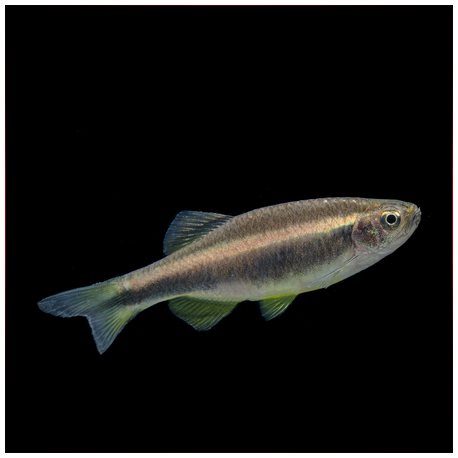More info
Datasheet
| Minimum Tank Size | 120 litres / 31.70 US gallons |
| Maximum Size | 6.1cm / 2.40inches |
| Temperature | 18°C / 64.40°F - 23°C / 73.40°F |
| Hardness | 2.02dgH / 36ppm - 10.03dgH / 179ppm |
| pH | 6.0-7.0 |
Behaviour
The Betadevario Ramachandrani is not considered an aggressive fish but is known to stress less active tankmates due to its constant movement and vigorous feeding behavior. Hence, it is suitable for communities containing robust, similarly-sized fishes. It is recommended to keep them in groups of at least 8-10 specimens to reduce nervousness and enhance natural behavior. Additionally, maintaining them in decent numbers allows males to display their best colors as they compete for female attention. Compatible tankmates include cyprinids, loaches, cichlids, catfishes, and characids. When selecting a community, thorough research is essential. Creating a community of species from the Western Ghats, such as Dawksinia arulius, Haludaria fasciata, and Puntius sahyadriensis, could be a rewarding project for aquarists.
Feeding and Diet
The Betadevario Ramachandrani primarily preys on insects and their larvae in the wild. In an aquarium, it is an unfussy eater and accepts most foods. A staple diet of good quality dried food should be supplemented with small live and frozen fare like bloodworms, Daphnia, and Artemia to enhance coloration and conditioning.
Reproduction & Dimorphism
This species is an egg-scattering spawner, with no reported parental care behavior. Sexually mature females are slightly larger and rounder-bellied compared to males. Males may intensify in color during spawning, but this behavior is yet to be confirmed.
Aquarium Setup
Setting up the aquarium for Betadevario Ramachandrani is not challenging but requires careful attention to detail. Mimic a flowing stream or river environment by using variably-sized, water-worn rocks, sand, fine gravel, and small boulders as substrate. Incorporating driftwood roots or branches adds to the natural aesthetic. Hardy aquatic plants like Microsorum, Bolbitis, or Anubias spp. can be attached to the decor. The species thrives in clean water conditions, necessitating regular water changes of 30-50% tank volume and high dissolved oxygen levels. Due to their jumping ability, a tightly-fitting tank cover is essential.
Habitat and Distribution
The Betadevario Ramachandrani is endemic to the upper Sita River drainage near Agumbe village in Karnataka state, southwestern India. Found in shallow, high-altitude streams within the Western Ghats mountain range, this species is unique to the region. The habitat consists of cascades, small pools, and a biodiversity-rich environment with various locally endemic fish species. Agumbe is renowned for its high rainfall and extensive forests close to wildlife sanctuaries and national parks, contributing to its status as a biodiversity hotspot.

